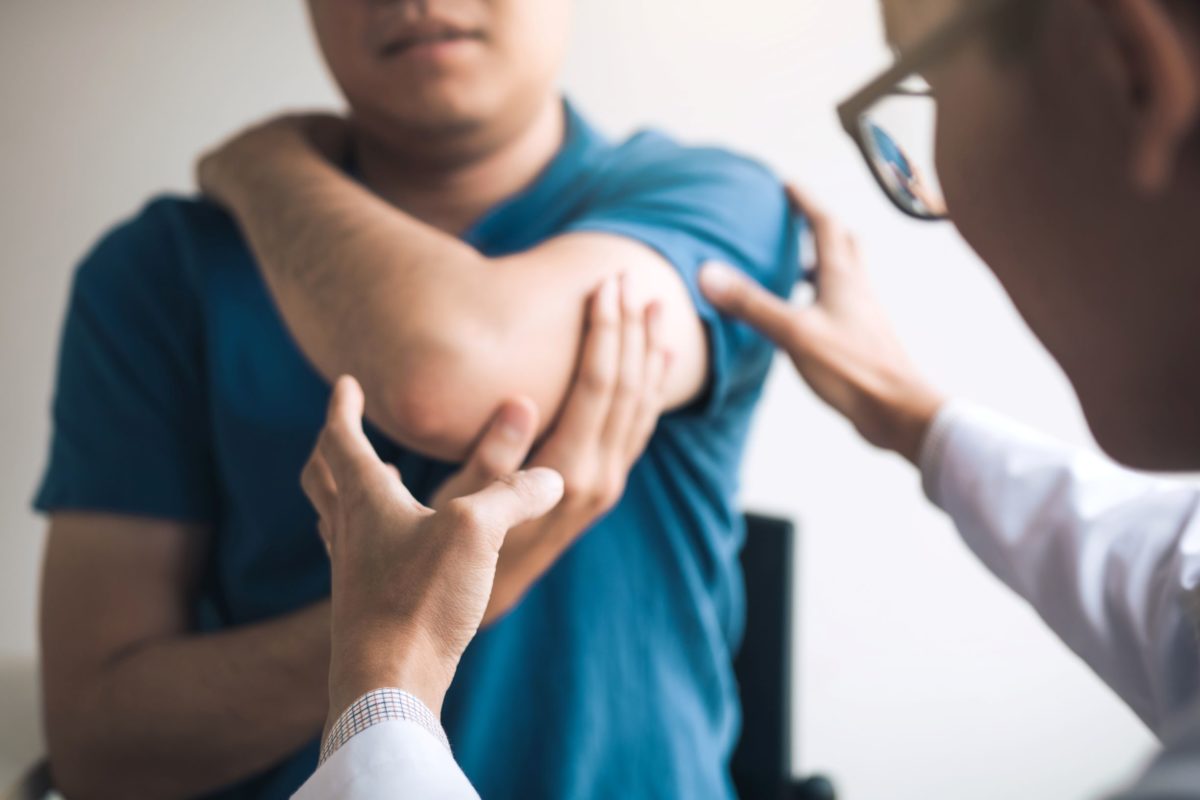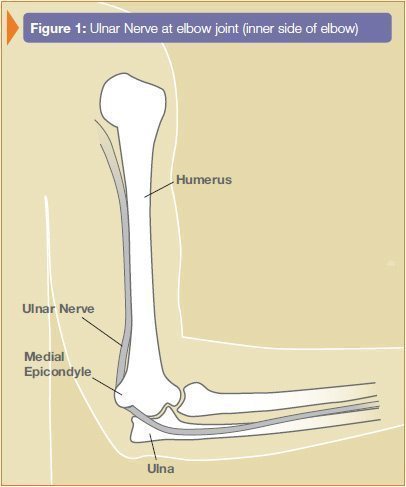Most elbow pain is temporary, but persistent pain or discomfort that affects your quality of life may require elbow surgery.
We treat several common conditions that may require elbow surgery at our southeast Michigan offices. Make an appointment to see our elbow surgeon in Macomb Township, Warren, Howell, or West Bloomfield for the following treatments or a diagnosis of your condition.
Cubital Tunnel Syndrome Surgery
Cubital tunnel syndrome occurs when there is too much pressure on the ulnar nerve, which runs along the ulna bone in the forearm and enters the hand near the pinky and ring fingers.
Causes of cubital tunnel syndrome include leaning on hand surfaces or bending the elbow for an extended period of time, or you may develop cubital tunnel syndrome due to an anomaly in the anatomy of your elbow. If you have this condition, you may experience severe pain and numbness in the elbow, as well as tingling or weakness in your ring and pinky fingers. It may become difficult to close your hand.
The first line of treatment for cubital tunnel syndrome is to avoid the action that is causing the pain. Using pain relief medications and wearing a splint at night may help as well.
When self-treatment does not help, cubital tunnel syndrome surgery may be recommended. The goal is to relieve the pressure by releasing and moving the ulnar nerve to the front of the elbow or increasing the size of the cubital tunnel.
Tennis Elbow Surgery & Other Treatment Options
Known as tennis elbow, lateral epicondylitis is a painful condition involving the tendons that attach to the bone on the outside (lateral) part of the elbow. The tendon’s attachment to the bone degenerates, which places increased stress on the area.
People who repeatedly use their elbow and arm muscles may be susceptible to tennis elbow, such as painters, plumbers, and butchers.
Tennis elbow can usually be treated with rest, pain medication, Botox injections, or the use of a brace. Tennis elbow surgery may be recommended in more extreme cases.
Elbow Fracture Examination & Treatment
Elbow fractures may occur due to a fall or direct impact. Pain, swelling, bruising, and stiffness in and around the elbow suggest a possible fracture. A snap or pop at the time of injury may be felt or heard as well.
Types of elbow fractures include:
- Olecranon fractures
- Fractures of the distal humerus
- Radial head and neck fractures of the elbow
Depending on the type of injury and its severity, treatment options for elbow fractures include splint immobilization, casting the elbow, physical therapy, surgery to realign the bone fragments, and external fixation to stabilize the fractures.
Olecranon Bursitis Surgery & Assessment
The olecranon is the pointy bone at the tip of the elbow. A small sac of fluid called a “bursa” covers the tip of this bone. Sometimes this area gets irritated and the body makes extra fluid inside the sac, causing a big “balloon” that looks like a golf ball to form at the tip of the elbow.
Causes of olecranon bursitis include hitting the elbow on an object, overuse of the elbow, systemic diseases, and medical procedures.
It’s usually not painful, but it sometimes becomes infected. Remedies include using a splint and compression to rest the bursa, using elbow pads, using antibiotics to clear the infection, having cortisone injections, or drawing fluid out of the bursa with a needle in a procedure known as aspiration.
Olecranon bursitis surgery may be required if other remedies are not successful.
Golfer’s Elbow Treatment
Golfer’s elbow causes and treatments are similar to that of tennis elbow, but there are some differences between the two conditions.
The primary difference is the source of the inflammation. With tennis elbow, the outside of the elbow and forearm areas are inflamed, but with golfer’s elbow, inflammation is on the inner side of the arm and elbow.
Likewise, tennis elbow stems from damage to an outside tendon, and golfer’s elbow is associated with damage to an inner tendon.
Golfer’s elbow is more formally called medial epicondylitis, and it is sometimes referred to as baseball elbow or suitcase elbow.





 What many people call the “funny bone” really is a nerve. This ulnar nerve runs behind a bone in the elbow through a space called the “cubital tunnel” (Figure 1). Although “banging the funny bone” usually causes temporary symptoms, chronic pressure on or stretching of the nerve can affect the blood supply to the ulnar nerve, causing numbness or tingling in the ring and small fingers, pain in the forearm, and/or weakness in the hand. This is called “cubital tunnel syndrome.”
What many people call the “funny bone” really is a nerve. This ulnar nerve runs behind a bone in the elbow through a space called the “cubital tunnel” (Figure 1). Although “banging the funny bone” usually causes temporary symptoms, chronic pressure on or stretching of the nerve can affect the blood supply to the ulnar nerve, causing numbness or tingling in the ring and small fingers, pain in the forearm, and/or weakness in the hand. This is called “cubital tunnel syndrome.”










